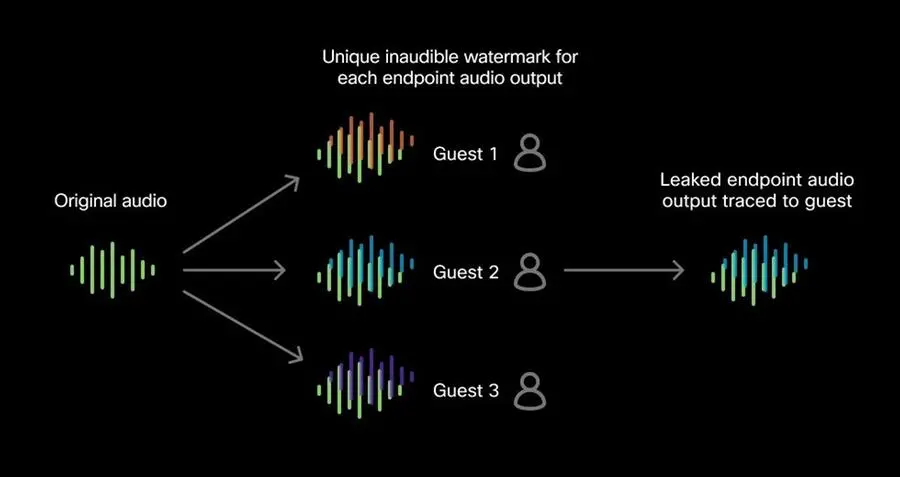Cisco has introduced new audio watermarking features to its Webex collaboration platform, providing organizations in the Middle East with greater assurance as they navigate complex hybrid work environments and prioritize insider threat prevention. The audio watermarking tool can be used to protect confidential meeting content.
Ahmad Zureiki, Director of Collaboration Business, Cisco Middle East and Africa, commented: “In a digital-first world, it is not uncommon for confidential meetings to be secretly recorded and leaked on different platforms. Even without malicious intentions, leaked content can have significant impact on a business, including competitive advantage, sales, and stock price.”
“Over the years, Webex has established a reputation for putting security first – built-in, not bolted on. While enabling seamless collaboration, our customers also rely on us to deliver security threat intelligence. The introduction of audio watermarking marks another step in our commitment to empowering security resilience, giving organizations peace-of-mind as they embrace the hybrid workplace,” he added.
How audio watermarking works
Most people are familiar with traditional watermarks that are applied to photos and images. The same concept has been applied in the digital world, with covert markers embedded into audio, video, or image signal data. This is meant to identify ownership, verify authenticity, and protect copyright information for movies, music, and images, and in the case of Webex, identify the source of leaked meeting recordings.
Enabling the Webex audio watermark feature is easy. A host simply chooses the audio watermarking option when scheduling a meeting and they can rest assured their meeting will be embedded with unique audio identifiers that are undetectable to the human ear, as well as nearly insensitive to added noise, audio compression, filtering, and noise suppression processing techniques.
A unique audio signal for every meeting guest’s endpoint
When audio watermarking is enabled for a meeting, a unique audio identifier is created for each endpoint device – the laptop, phone or conference room device. This unique audio identifier includes information about the organization, the meeting, and the endpoint used when the unauthorized meeting recording was captured.
Software on the endpoint system converts the identifier into a unique audio signal and uses advanced communications coding methods to mix it continuously into the meeting audio as it is played through the speakers or headset. This algorithm makes the unique audio identifier inaudible to listeners but readily captured in any recording on a mobile device or other recording devices.
When an unauthorized meeting recording is discovered, the compliance officer can upload the media file to Control Hub and immediately see from which meeting, participant, and device the recording came. The uploaded file is never stored in the Webex cloud and using the watermarking analysis feature is self-serve, so there is no need to contact Webex or expose the meeting recording content to additional people to obtain assistance – Webex customers are in complete control of identifying the source of the leak. As long as they have a short segment of the recording material and the recording is less than 10 years old, the source can be revealed. With this, the impact of each data security threat can potentially be minimized.
Built-in prevention at no additional cost
With Webex’s audio watermarking feature, customers can uncover leaks, reduce occurrences of unauthorized meeting recordings reaching unintended audiences, and better protect their brand and mission. It combines our industry-leading security, manageability, and audio intelligence capabilities to bring our customers a highly sought-after feature at no additional cost. We will continue to stay on top of customer needs in an evolving hybrid world to create features to protect our customers’ users, content, applications and devices – all while providing the best collaboration experience for users and IT administrators alike.






